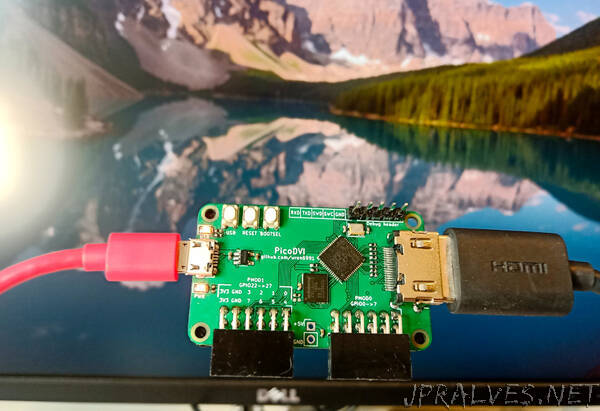
“This project stems from a stupid idea I had during RP2040 bringup. I couldn’t convince myself the idea was too stupid to work, so I took a leap of faith on it, and the results are documented here.
RP2040 was designed to run at 133 MHz, but we found (without too much surprise) that typical silicon can be pushed further. In fact, there was overlap between the maximum system clock, and the TMDS bit clocks of slower DVI video modes. We had done great stuff with VGA on the FPGA platform, which ran at 48 MHz, but wouldn’t it be absurd and wonderful to connect your microcontroller straight to an HD TV with no other electronics in between? This seemed unlikely to work out, but I stayed up at night playing around with assembly loops, and I could not convince myself that DVI was out of reach. Everything seemed to fit:
With some of the core-local hardware on RP2040, and a neat encoding trick, I could do pixel-doubled TMDS encode on-the-fly using around 60% of an M0+ (running at 252 MHz, for 640x480p 60 Hz DVI)
PIO can yeet out data streams at system clock frequency, and drive a 1/10th rate clock on the side, with pretty minimal programming
Some of the DMA features are help with putting together the sync/blanking patterns on the fly, rather than having the patterns flat in memory
With the second processor utterly unencumbered, you can render some pretty graphics to put on your DVI display. There is even enough RAM for a QVGA framebuffer!
The greatest unknown was driving 252 Mbps serial through the general-purpose digital pads (especially differential serial, emulated with two single-ended pads). By this point I was utterly driven and consumed by the need to find out if DVI could work, so I laid out a board over a few evenings after work.”
